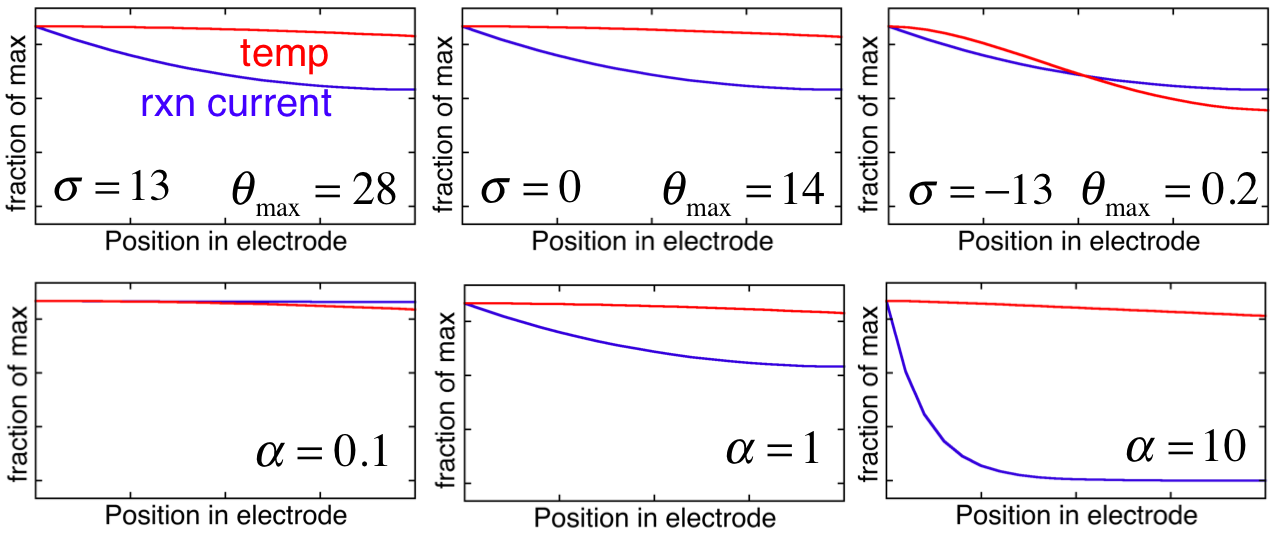

Four dimensionless key parameters that describe the electrical and thermal response of prismatic lithium-ion batteries are presented. Understanding of the thermal response of lithium-ion cells is essential because it would allow the batteries to be operated more efficiently in extreme environments. Two important issues about the thermal response are "cold start" and "thermal runaway." Thermal instability can be leveraged for the fast cold start of military vehicles and robotic platforms. Thermal instability can be suppressed to prevent thermal runaway , making operation in very warm environments safer.1
To introduce the minimum number of essential parameters of the battery responses , the simplest models are carefully chosen. At least two physical models are necessary for describing an electrochemical system: an electrochemical model and a local energy balance. For the electrochemical model , we select Newman and Tobias model , which provides an analytic solution with an assumption that the ion concentration gradient is negligible.2 The analytic solution describes how the reaction current is distributed in the porous electrodes.
For the energy balance3 ,4 , three different heat sources are necessary to match our experimental data: (1) Joule heating of electrode matrix and electrolyte (simple IR heating) , (2) another Joule heating generated by the interfacial resistance between electrode and electrolyte , and (3) the reaction heating from reversible entropy change. The Joule heating is always exothermic; however , the reversible heat can be endothermic or exothermic depending on the electrochemical reaction.
Even though the physics are minimalized for simplicity , the number of physicochemical parameters in our models was more than ten; however , the number could be decreased to four after rigorous dimensional analysis. The analytic solutions in 1D geometry allow demonstration of how these four essential properties affect the system responses (see Fig. 1). Therefore , not only do these parameters suggest what are important factors for the battery response , but they also help to control the battery in efficient ways , since this test shows that many parameters have the same effect in the electrical/thermal response.
|
|
|
Fig. 1. The effect of reaction heat (1st row) and kinetic resistance (2nd row). Reaction heat (σ) changes the max temperature (θmax) and its profile , and the large ratio of bulk and kinetic resistances (α) makes reaction distribution more concentrated on separator side.
|
[1] T. M. Bandhauer , S. Garimella , and T. F. Fuller , Journal of The Electrochemical Society 158 , R1 (2011).
[2] J. S. Newman and C. W. Tobias , 109(12) , 1183 (1962).
[3] D. Bernardi , E. Pawlikowski , and J. Newman , J. Electrochem. Soc. 132 , 5 (1985).
[4] J. Newman and K. E. Thomas-Alyea , Electrochemical Systems , 3rd ed. Wiley , 2004.
Presenter(s)
Pricing
Individuals
| AIChE Member Credits | 0.5 |
| AIChE Pro Members | $15.00 |
| Fuels and Petrochemicals Division Members | Free |
| AIChE Graduate Student Members | Free |
| AIChE Undergraduate Student Members | Free |
| AIChE Explorer Members | $25.00 |
| Non-Members | $25.00 |

